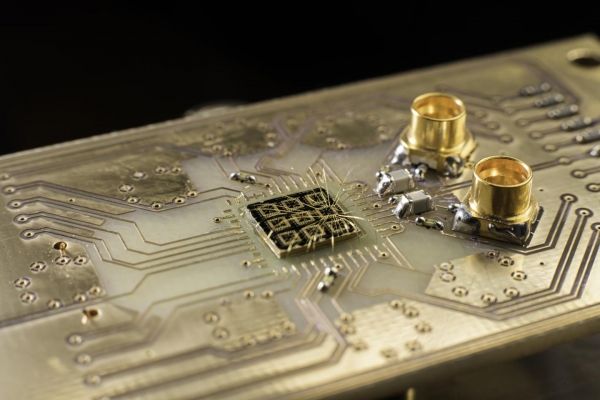Quantum computing has the potential to revolutionize technology, medicine, and science by providing faster and more efficient processors, sensors, and communication devices.
But transferring information and correcting errors within a quantum system remains a challenge to making effective quantum computers.
In a paper in the journal Nature, researchers from Purdue University and the University of Rochester, including John Nichol, an assistant professor of physics, and Rochester PhD students Yadav P. Kandel and Haifeng Qiao, demonstrate their method of relaying information by transferring the state of electrons. The research brings scientists one step closer to creating fully functional quantum computers and is the latest example of Rochester’s initiative to better understand quantum behavior and develop novel quantum systems. The University recently received a $4 million grant from the Department of Energy to explore quantum materials.
Quantum computers
A quantum computer operates on the principles of quantum mechanics, a unique set of rules that govern at the extremely small scale of atoms and subatomic particles. When dealing with particles at these scales, many of the rules that govern classical physics no longer apply and quantum effects emerge; a quantum computer is able to perform complex calculations, factor extremely large numbers, and simulate the behaviors of atoms and particles at levels that classical computers cannot.
Read more at University of Rochester
Image: John Nichol's research brings scientists one step closer to creating a fully functional quantum computer, a type of computer that operates on the principles of quantum mechanics. Seen here, a quantum processor semiconductor chip is connected to a circuit board. Thin aluminum wires are connected from the surface of the semiconductor chip to pads on the circuit board, which allows users to perform electrical control and readouts of the device by sending and receiving electrical signals during experiments. The researchers fabricate the device by patterning and depositing metal gates on a GaAs/AlGaAs heterostructure chip. The metal gates are designed to be able to trap individual electrons in the semiconductor. They send electrical signals down to the device and change the voltage on the metal gates to perform various controls of the electrons. They also receive electrical signals from the device to help monitor the electrons' behavior. (Credit: University of Rochester photo / J. Adam Fenster)


